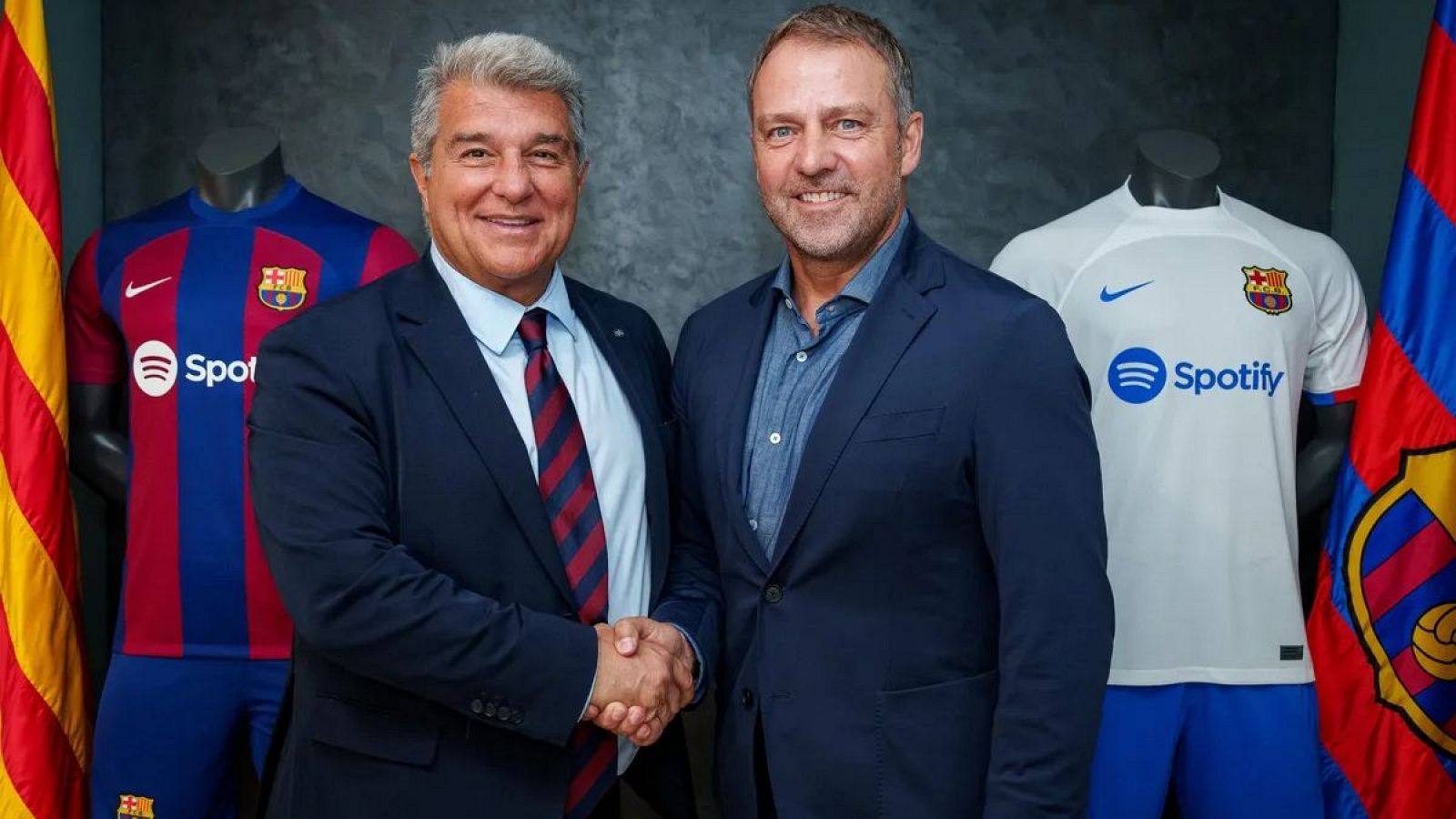Sports
Rob Manfred has tried to make MLB a national sport. Now TV rights might go national, too.

One of the reasons for the balanced schedule being adopted by Major League Baseball beginning in 2023 was the professed desire for more players to play in more cities. The argument went: Why should some players play in certain cities only once every six years because of some artificial “league” construct that was mainly an accident of history?
Presumably, this would make players like Mike Trout and Shohei Ohtani more popular and marketable by having them play in every MLB stadium at least once every other year.
Has the balanced schedule done this? Not really. MLB attendance was up significantly last year over 2022 (70,747,365 compared to 64,556,658), but a lot of that can be attributed to more normalcy returning after the pandemic, not the schedule. That 2023 MLB attendance total ranks 17th in MLB history, far below the record 79,484,718 who paid to see games in 2007.
The thing is, you can’t really make MLB a national sport, not with 162 games, not with the daily drumbeat of a schedule. It’s too many games for anyone to pay attention to on a national basis, unlike the NFL with its 17-game schedule over an 18-week span. Many games get nationally televised, even more so now with the NFL’s streaming deals, and for any NFL fan, their team is only on once a week, so it’s easy to focus on that game. Beyond this, there are seven MLB teams in the Pacific time zone (or equivalent, the D-backs are in Mountain time but in the summer, that’s the same as California time). These teams have dozens of games that start at 9 p.m. or later Eastern time and so these games are not going to get national attention. This isn’t the case with NFL games, which are all played either on Sunday afternoon or in an Eastern time-friendly evening slot.
Serious MLB fans have six or seven games from their team to follow every week, and while people like me love the everyday nature of the game, the casual fan tunes out a lot of it. Trying to make national stars out of guys like Trout, Ohtani, Aaron Judge or even a guy on an incredible hot streak like Shōta Imanaga is just not feasible. And even with all this, MLB doesn’t really promote players the way they could.
That’s why a new potential national TV proposal detailed by Evan Drellich in The Athletic wouldn’t work either, in my view. Drellich writes:
Commissioner Rob Manfred and some of the sport’s owners are more seriously talking about nationalizing baseball’s TV rights than ever before. Not because of relocation, but because of cord-cutting, the failure of some traditional regional sports networks, and the simultaneous battle for streaming supremacy waged by Netflix, Amazon and other streamers that has left sports leagues and rights holders in a chaotic reformation.
Some baseball owners and executives, mostly in smaller markets, believe the best way to grow media revenues over the long haul is to centralize the deal-making, and from there, to potentially sell all 30 teams’ regular-season broadcasts as one streaming package. Others in the game, particularly those whose teams make the most money, are vehemently opposed to surrendering their power over their rights.
Indeed, teams like the Yankees, Dodgers, Red Sox and Cubs, who are among the teams least affected by cord-cutters, would probably push back hard against any plan to centralize decision-making on local TV baseball broadcasts. It should be noted that any such proposal, if implemented, would probably eliminate all blackouts. That’s probably the only good thing about them.
Here’s the biggest roadblock:
The most divisive matter, though, is the dollars. Regardless of how a commissioner deployed the rights, the question would be: How is the revenue distributed, by equal split or otherwise? The New York Yankees received an estimated $143 million as a rights fee in 2022, much greater than a team like the Colorado Rockies, which received $57 million that same year, according to Forbes. It is ultimately, then, a rekindling of baseball’s classic drama, big market vs. small.
That’s exactly the difference between (for example) the NFL and MLB. The vast majority of NFL revenues are generated by their huge national TV contracts — and that money is split equally among the 32 NFL teams. That’s why small-market NFL teams can compete with their big-market brethren; they’re beginning on nearly equal footing on a financial basis. (The NFL salary cap, of course, is also a major factor.) At that point, it boils down to how smart your player evaluation executives are.
That’s not the case for MLB teams, which can vary in TV revenue, as noted above — and teams like the Dodgers get even more from their local TV deal, which runs 14 (!) more years until 2038. There’s another roadblock — the local TV contracts that have many years to run, or the channels, like the Cubs’ Marquee Sports Network, that are partly owned by the team. Last I heard, the Cubs were getting about $100 million a year from Marquee. They’re not going to be willing to give that up easily just so Rob Manfred can have a TV “legacy” when he retires in 2029.
More from the Drellich article:
The heart of the discussion, then, is really whether baseball could thrive as a “national” sport. Ironically, the national pastime is often regarded as a local game.
“Like almost everything in American life, it’s all about money,” former baseball commissioner Fay Vincent said in a phone interview. “The money is so enormously tilted locally. You know, trying to get yourself, if you’re living in New York, interested in a game where Seattle is flying to San Diego or something — it just doesn’t work.”
This is exactly correct. NFL fans can be convinced to watch a nationally-broadcast game between (say) the New York Giants and Dallas Cowboys, even if those fans aren’t in those two markets and aren’t really fans of those teams. Part of that is because the NFL season is largely in the fall and early winter and more people are indoors wanting something to fill their time, especially on Sunday afternoons. Now, try to do that on a summer Sunday evening involving the same markets — New York Yankees vs. Texas Rangers, say, on ESPN’s Sunday night national game. Beyond fans of those two teams, it’s only hardcore baseball fans who will watch. Casual fans are out having BBQs or doing something else on a summer Sunday.
And Rob Manfred wants MORE of that?
There is one possibility of nudging the league in a more national direction, writes Drellich:
In a nuanced distinction: MLB could launch some sort of smaller national streaming package, one with perhaps half the teams, without changing its actual rights system. Some teams today are not in exclusive deals with RSNs, freeing them up for the league to roll up into a bundle immediately. Manfred has expressed interest in doing this as soon as 2025, but he doesn’t have enough teams he could pool together at this point for a viable product. That could change later this year, however, if Diamond Sports Group fails to emerge from bankruptcy.
That, I could see happening, especially if Diamond doesn’t come out of bankruptcy and the rights for those teams revert to the league.
But overall, I’ll stick to my belief that baseball is a regional, not national, sport, and should be arranged and marketed that way. Beyond not being suitable for the sort of national TV streaming package proposed here, MLB should go back to the unbalanced schedule. Divisional rivalries are the best, and I’d much rather have more Cubs vs. Brewers and Cubs vs. Cardinals than more random series against the Mariners or Blue Jays, no insult intended to fans of those teams. They should get more of their own rivals, too.
As always, we await developments.









